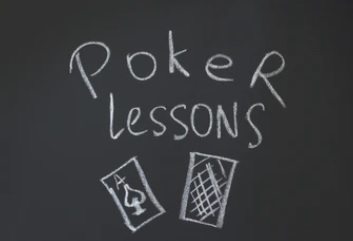With most forms of poker, your play in and around the blinds will often define what type of success you have. This is simply because of the positional importance in all forms of poker. However, In a way, limit hold’em places a greater need for sound play in and around the blinds than no-limit. This may surprise a few people, but how often can you end up in no-limit play having a winning session without ever having to get involved in a blind versus blind confrontation or getting involved against a stealer? This may not happen as often in six max, but in some forms of poker, like NL ring, you can have good winning sessions without having to defend your blinds or three bet apparent stealers. This is certainly the case at the lower limits. But life isn’t so easy in six max limit and you will need to play a fair percentage of your hands in the blinds as well as attacking the blinds with the correct frequencies.
The need for accurate play is paramount and one of the primary pieces of information that you will need is the overall percentage of how often your opponent raises from steal seats. If you have data like this then this will allow you to construct your own range to three-bet.
These percentages are going to differ widely depending on the limit that you play. For example, a $1-$2 game may have many players open limping and failing to attack the blinds with a correct frequency. In these instances you will see steal raise percentages as low as 20%, or even lower in some cases. Mainly at the higher levels, these percentages start to hit the 40%+ mark as players push small edges aggressively and have far bigger bankrolls to be able to withstand the variance.
For instance, a player who raised with about 45% of their hands from the cut-off over a substantial sample size is going to be raising with the following range 22+, A2s+, A2+, K2s+, K5+, Q6s+, Q7+, J7s+, J9+, T7s+, T8+, 96s+, 98 and 86s+. This is a familiar range from the steal seats for a strong aggressive player at the middle limits, say $15-$30 or above.
I use Poker Office 5 a lot with my calculations (although I haven’t played limit for quite some time) and you will see me quote this sniffer a lot in my articles as I prefer this one over PT and HM. In my mind, tracking software is even more pertinent in limit play than it is in no-limit as calculating ranges is more important in this form of poker. This is because you will be going against particular players more often than in no-limit and especially full-ring no-limit play.
So, against a steal raiser who raises something like 45% of their total range, I look to three bet with hands that have around 50% equity or more against their range. In fact this figure can be reduced if you are certain that the blinds fold a fair percentage of the time. The blinds folding will create valuable dead money and this can make many extra hands profitable. However the flip side to this is that sometimes you do need to be a favourite if other players are likely to come in as wel, as this would mean eliminating many of the hands at the bottom end of your three betting range. Against a cut-off who raised 45% I would be looking to three bet with 55+, A7s+, A8+ and KJs+ and KJ+. The effect of three betting to fold out the blinds does increase the equity in your hand substantially, but this effect drops off alarmingly if another player calls with too high a frequency. .
This is where many aggressive intermediate players go wrong because they assume that three betting will always fold out the blinds. There are many levels where a three bet will not work anywhere near as often as what you need it to in order for your strategy to show a profit. Loose low limit players will call you simply because they want action and higher limit players will call of four bet simply because they realise that you are merely raising lighter than what you should be and attempting to isolate with position. Three betting needs to be done with care, even if you suspect that your opponent in the cut-off may be raising lighter than what they should be.
Also in many situations the better play with the lower end of your range is to fold. Calling is often the worst of the three available options. Calling a steal raise will fail to get dead money in the pot and your hand will lose a lot of equity against a third or even a fourth player if the small blind enters the pot as well.
I use my Poker Office to basically tell me two very important things about these players! I need to know how often they raise pre-flop and how often they raise from the steal seats. Many players overstep the mark here and end up open raising too liberally, especially from the hijack or the cut-off..
You need to basically know what type of players you are up against, as many types will tighten up substantially UTG and only look to open up from the hijack, cut-off and button. Some other players however don’t like having two players with position on them before they look to steal and so only open up from the cut-off and not the hijack.
As always, it really comes down to knowing your opponents, but remember what I said earlier. Just because a player is stealing in limit hold ‘em does not automatically give you the green light to three bet with a much wider range.
Carl “The Dean” Sampson is an ambassador for Cake Poker and can be seen at cakepoker.com/thedean and on his blog at www.pokersharkpool.com.










